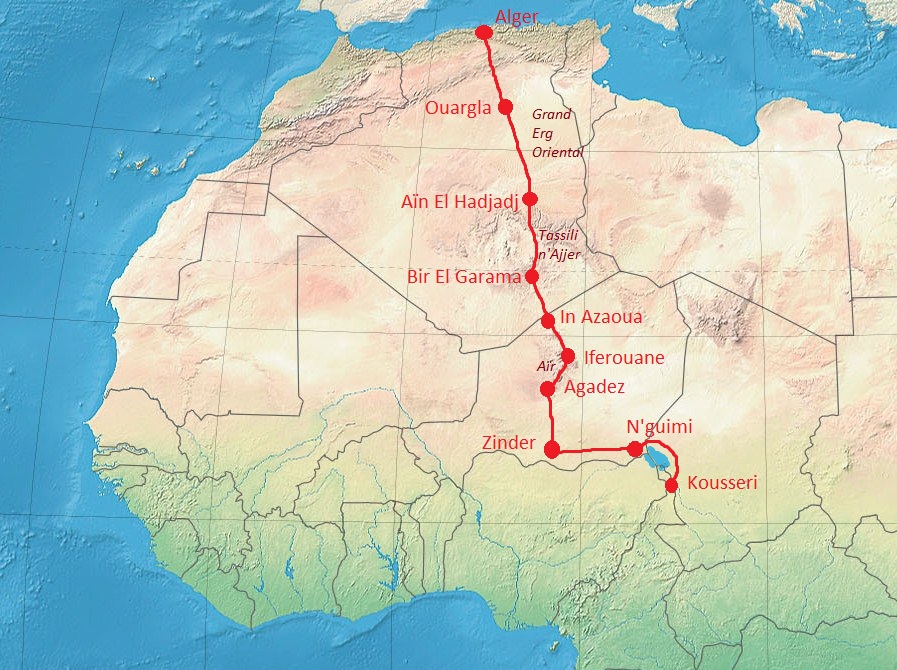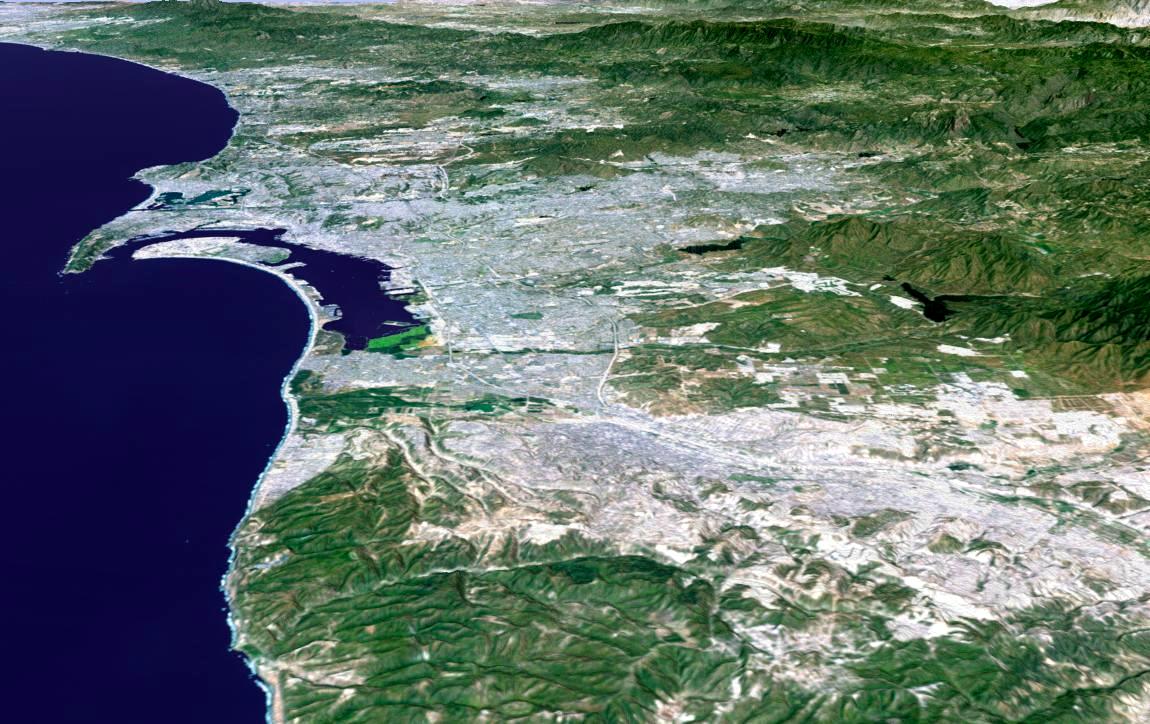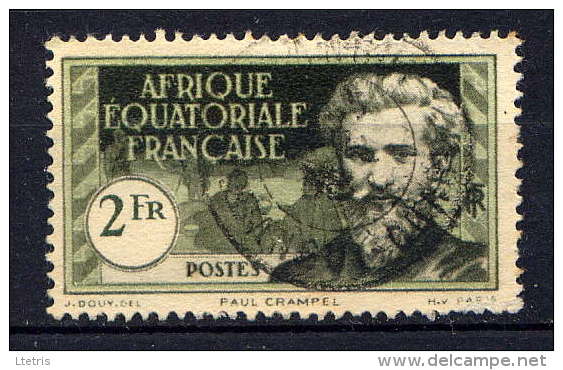|
Kousséri
Kousséri (from ar, قصور ''quṣūr'' meaning "palaces"), founded and known as Mser in the indigenous Mser language is a city in Far North Province, Cameroon. It is the capital of the Logone-et-Chari department. It is a market town, and its population has recently been swollen by refugees from Chad. It had a population of 89,123 at the 2005 Census. The majority of the population are Shuwa Arabs with Chadian Arabic used as the lingua franca. It forms a transborder agglomeration with the city of N'Djamena, capital of Chad, from which it is separated by the Logone River and the Chari River. History Kousséri was part of the Bornu Empire. In March 1846 Omar (son of Sheik Mohammed), nominal general of the Bornu sultan Ibrahim suffered a defeat at Kousséri.Helmolt, Hans F. (ed.) (1903) ''The history of the world; a survey of a man's record, Volume III: West Asia and Africa'' Dodd, Meade and Co., New Yorkp. 536 In 1900 the village was occupied by soldiers of Rabij az-Zubayr ... [...More Info...] [...Related Items...] OR: [Wikipedia] [Google] [Baidu] |
Far North Province
The Far North Region, also known as the Extreme North Region (from french: Région de l'Extrême-Nord), is the northernmost constituent province of the Republic of Cameroon. It borders the North Region to the south, Chad to the east, and Nigeria to the west. The capital is Maroua. The province is one of Cameroon's most culturally diverse. Over 50 different ethnic groups populate the area, including the Shuwa Arabs, Fulani, and Kapsiki. Most inhabitants speak the Fulani language Fulfulde, Chadian Arabic, and French. Geography Land Sedimentary rock such as alluvium, clay, limestone, and sandstone forms the greatest share of the Far North's geology. These deposits follow the province's rivers, such as the Logone and Mayo Tsanaga, as they empty into Lake Chad to the north. At the province's south, a band of granite separates the sedimentary area from a zone of metamorphic rock to the southwest. This latter region includes deposits of gneiss, mica, and schists. The Rhumsiki V ... [...More Info...] [...Related Items...] OR: [Wikipedia] [Google] [Baidu] |
Battle Of Kousséri
The battle of Kousséri originated in French plans to occupy the Chari-Baguirmi region. In 1899–1900, the French organized three armed columns, one proceeding north from Congo, one east from Niger and another south from Algeria. The objective was to link all French possessions in Western Africa, and this was achieved April 21, 1900 on the right bank of the Chari in what is now Chad opposite Kousséri, in what today is northern Cameroon. Prelude In 1899, Sudanese warlord Rabih az-Zubayr could field some 10,000 infantry and cavalry, all provided with rifles (except for 400 rifles, these were mostly obsolete), plus a great number of auxiliary troops equipped with lances or bows. His forces held fortified garrisons at Baggara and Karnak Logone. In 1899, Rabih received in Dikoa the French representative Ferdinand de Béhagle. The talks between them degenerated, and Béhagle was arrested. On July 17, 1899, Lieutenant Bretonnet, whose force was then sent by France against Ra ... [...More Info...] [...Related Items...] OR: [Wikipedia] [Google] [Baidu] |
Amédée-François Lamy
Amédée-François Lamy was a French military officer. He was born at Mougins, in the French ''département'' of Alpes-Maritimes on 7 February 1858 and died in the battle of Kousséri on 22 April 1900. Early years Lamy's ambition to become an officer developed very early; at ten-years-old, he entered the Prytanée National Militaire, where he won the first prize in Geography in the general concourse of all the department's school, a possible sign of his future colonial career. In 1877 he entered at Saint-Cyr, the foremost French military academy. Military career Lamy began his career in 1879 as a Second Lieutenant in the First regiment of Algerian tirailleurs. He discovered Saharan Africa, and took part in the French occupation of Tunisia; he was sent in 1884 to Tonkin, where he remained until 1886. The following year he was back in Algeria, where he became ''aide-de-camp'' to the General in command of the division quartered in Algiers in 1887, and resumed his previous inter ... [...More Info...] [...Related Items...] OR: [Wikipedia] [Google] [Baidu] |
Rabih Az-Zubayr
Rabih az-Zubayr ibn Fadl Allah or Rabih Fadlallah ( ar, رابح فضل الله ,رابح الزبير ابن فضل الله), usually known as Rabah in French (c. 1842 – April 22, 1900), was a Sudanese warlord and slave trader who established a powerful empire east of Lake Chad, in today's Chad. Born around 1842 to an Arabic tribe in Halfaya Al-Muluk, a suburb of Khartoum, he first served with the irregular Egyptian cavalry in the Ethiopian campaign, during which he was wounded. When Rabih left the army in 1860s, he became the principal lieutenant of the Sudanese slaveholder Sebehr Rahma. Lieutenant of al-Zubayr (1870–1879) In the 19th century, Khartoum had become a very important Arab slave market, supplied through companies of ''Khartumi'' established in the region of Bahr el Ghazal, where they resided in zarības ( ar, زريْـبـة), thornbush-fortified bases kept by bāzinqirs (firearm-equipped slave soldiers). The warlord and slaveholder al-Zubayr Rahma Mans ... [...More Info...] [...Related Items...] OR: [Wikipedia] [Google] [Baidu] |
Logone-et-Chari
Logone-et-Chari is a department of Extreme-Nord Province in Cameroon. The department covers an area of 12,133 km and at the 2005 Census had a total population of 486,997. The capital of the department is at Kousséri. Most inhabitants of this department speak Chadian Arabic. Subdivisions The department is divided administratively into 10 communes and in turn into villages. Communes * Blangoua * Darak * Fotokol * Goulfey * Hile-Alifa * Kousséri * Logone-Birni * Makary * Waza * Zina Languages Languages spoken include: * Afade * Chadian Arabic * Jina * Kuo * Lagwan * Majera Majera (Mazera) is a minor Afro-Asiatic language of Chad and Cameroon. Majéra is spoken in and around Majéra in the arrondissement of Zina (Logone-et-Chari Logone-et-Chari is a department of Extreme-Nord Province in Cameroon. The departm ... * Malgbe * Maslam * Masana * Nzakambay References Departments of Cameroon Far North Region (Cameroon) {{Cameroon-geo-stub ... [...More Info...] [...Related Items...] OR: [Wikipedia] [Google] [Baidu] |
Émile Gentil
Émile Gentil (; 4 April 1866 – 30 March 1914) was a French colonial administrator, naval officer, and military leader. Born at Volmunster in the department of Moselle, he later attended the École Navale, the school that formed French naval officers. As an ensign, he was assigned to conduct hydrographic soundings along the Gabonese coast from 1890 to 1892. That year, he joined the colonial administration in Gabon. Missions to the African Interior Gentil is best known for heading two military missions to conquer and consolidate territories north from modern Gabon to Chad. First Mission 1895–1897 In 1895, Gentil was ordered to find a practical route to Chad, claiming the area between for France, and hence thwarting German and British expansion. On 27 July 1895, Gentil headed up the Congo River on the French steamship ''Léon-Blot''. The ship was then dismantled and hauled by African laborers through the forest to reach navigable portions of the Oubangui, where he fou ... [...More Info...] [...Related Items...] OR: [Wikipedia] [Google] [Baidu] |
N'Djamena
N'Djamena ( ) is the capital and largest city of Chad. It is also a special statute region, divided into 10 districts or ''arrondissements''. The city serves as the centre of economic activity in Chad. Meat, fish and cotton processing are the chief industries, and it is a regional market for livestock, salt, dates, and grains. It is a port city located at the confluence of the Logone River with the Chari River, forming a transborder agglomeration with the city of Kousséri (in Cameroon), capital of the Department of Logone-et-Chari, which is on the west bank of both rivers. It had 1,093,492 inhabitants in 2013. History N'Djamena was founded as Fort-Lamy by French commander Émile Gentil on 29 May 1900, and named after Amédée-François Lamy, an army officer who had been killed in the Battle of Kousséri about a month earlier. It was a major trading city and became the capital of the region and nation. During the Second World War, the French relied upon the city's airpor ... [...More Info...] [...Related Items...] OR: [Wikipedia] [Google] [Baidu] |
Transborder Agglomeration
A transborder agglomeration is an urban area, urban agglomeration or conurbation that extends into multiple sovereign states and/or dependent territory, dependent territories. It includes city-states that agglomerate with their neighbouring countries. List of transborder agglomerations Africa Asia Europe North America South America See also * Border town * Cross-border town naming * List of divided cities * Metropolitan area References {{DEFAULTSORT:Transborder Agglomeration Transborder agglomerations, Divided regions, * ... [...More Info...] [...Related Items...] OR: [Wikipedia] [Google] [Baidu] |
Logone River
The Logon or Logone River is a major tributary of the Chari River. The Logone's sources are located in the western Central African Republic, northern Cameroon, and southern Chad. It has two major tributaries: the Pendé River (Eastern Logone) in the prefecture Ouham-Pendé in the Central African Republic and the Mbéré River (Western Logone) at the east of Cameroon. Many swamps and wetlands surround the river. Settlements on the river include Kousseri, Cameroon's northernmost city, and Chad's capital city, N'Djaména, which is located at the spot where the Logone empties into the Chari River. The Logone forms part of the international border between Chad and Cameroon. Hydrometry The flow of the river has been observed over 38 years (1951–84) in Bongor a town in Chad downstream of the union with the Pendé about above the mouth into the Chari. The Bongor observed average annual flow during this period was fed by an area of about approximately 94.5% of the total catchmen ... [...More Info...] [...Related Items...] OR: [Wikipedia] [Google] [Baidu] |
Mser Language
Mser (Msər), or Kousseri (Kuseri), is a moribund Afro-Asiatic language spoken in northern Cameroon and southwestern Chad. Dialects are Gawi, Houlouf, Kabe, Kalo, Mser (Kuseri). In Cameroon, Mser is spoken in Kousseri (Kousséri and Logone-Birni Logone-Birni is a town and commune in Cameroon. The town lies on the left (west) bank of the Logone River which at this point forms the state boundary between Cameroon and Chad. It is the capital of the Kotoko people, whose two other principal c ... communes, Chari Department, Far North Region). It is also spoken in Chad. There is a total of 2,100 speakers (in both Cameroon and Chad). References Biu-Mandara languages Endangered Afroasiatic languages Languages of Chad Languages of Cameroon {{Chad-stub ... [...More Info...] [...Related Items...] OR: [Wikipedia] [Google] [Baidu] |
French Equatorial Africa
French Equatorial Africa (french: link=no, Afrique-Équatoriale française), or the AEF, was the federation of French colonial possessions in Equatorial Africa, extending northwards from the Congo River into the Sahel, and comprising what are today the countries of Chad, the Central African Republic, the Republic of the Congo, and Gabon. History Established in 1910, the Federation contained four (later five) colonial possessions: French Gabon, French Congo, Ubangi-Shari and French Chad. The Governor-General was based in Brazzaville with deputies in each territory. In 1911, France ceded parts of the territory to German Kamerun as a result of the Agadir Crisis. The territory was returned after Germany's defeat in World War I, while most of Cameroon proper became a French League of Nations mandate not integrated into the AEF. French Equatorial Africa, especially the region of Ubangi-Shari had a similar concession system as the Congo Free State and similar atrocities were also c ... [...More Info...] [...Related Items...] OR: [Wikipedia] [Google] [Baidu] |
Paul Joalland
Paul-Jules Joalland (8 November 1870 – 27 September 1940) was a French officer, known mainly for completing the Voulet-Chanoine Mission. He was one of the six officers of the latter expedition, and was an artillery expert with the rank of lieutenant. The Voulet-Chanoine Mission was commanded by the captains Paul Voulet and Julien Chanoine, entrusted in 1898 by the government with the mission to explore and conquer the territories between the Niger River and Lake Chad, with the ultimate goal to unify, Jointly with other two similar expeditions, all French territories in West Africa. The brutalities and massacres committed by the expedition after leaving Senegal brought the authorities to replace Voulet and Chanoine with Lieutenant Colonel Klobb; the latter was killed close to Zinder by Voulet on 14 July 1899, and shortly after Voulet and Chanoine were killed by their troops, that recognized as commander Joalland, who was promoted to the rank of captain. Joalland left Zinder ... [...More Info...] [...Related Items...] OR: [Wikipedia] [Google] [Baidu] |








